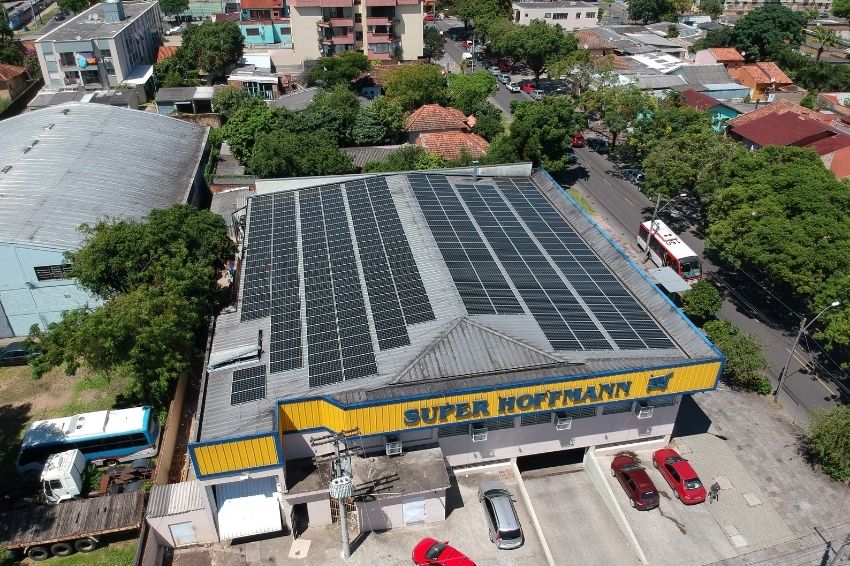According to a survey carried out by Greener, a consultancy and research company, among commercial consumers, retail is the sector that installed the most photovoltaic systems in the first half of 2021, representing 38% of implementations.
The highlight was supermarkets (22%) and gas stations (9%). In the services sector, which represents 35%, the hotel segment stood out with 14%, followed by the health sector (clinics, hospitals and laboratories) with 10%.
“The retail market is a big trend, it is boosting DG (distributed generation) in Brazil, especially at this time of economic recovery”, said Márcio Takata, director of Greener.
Read more: Retail market bets on solar to reduce electricity bill costs
In relation to the size of consumer companies that installed solar plants, micro and small companies led the use of the systems. In the survey, more than 74% of commercial installations were targeted towards these categories.
Bank financing
Another point highlighted by the report is about bank financing, which is already present in 54% of photovoltaic system sales made in 2021. “It is a very significant figure when compared to recent years”, pointed out the executive.
The most used bank was BV, representing 48%, followed by Santander, with 32%, and Solfácil, with 27%. Sicreedi and Sicoob corresponded for 24% and 23%, respectively. In fifth place is Banco do Brasil, with 16%. “Solar contributes to bringing better conditions to companies, it brings more competitiveness”, highlighted Takata.
Estimate of payback residential
According to the consultancy, the value of residential systems was R$ 4.88/Wp (average data according to GD survey 1st semester 2021 for 4 kWp systems). The calculation takes into account the site's productivity, the average cost of the systems, the concessionaires' tariff, a PR (Performance Ratio) of 75% and a simultaneity index of 30%.
In relation to the last GD survey, for example, the average payback of a residential photovoltaic plant decreased, on average, by 5.9%. The states of Bahia, Rio Grande do Norte and Minas Gerais were those that suffered the most reduction, while Maranhão had a slight increase in payback.
Estimate of payback commercial
Regarding the value of commercial systems, it was R$ 3.89/Wp (average data according to GD survey 1st semester 2021 for 50 kWp systems). The calculation considers the site's productivity, the average cost of the systems, the concessionaires' tariff, a PR of 75% and a simultaneity index of 70%.
In relation to the last GD survey, the average payback time of a commercial-sized photovoltaic system decreased, on average, by 5.4%. The states of Alagoas and Rio Grande do Sul were the most impacted, showing significant improvement in payback medium, while Rondônia and Amapá were the least impacted.
Estimate of payback industrial
The value of industrial systems was R$ 3.59/Wp (average data according to GD survey 1st semester 2021 for 300 kWp systems). The calculation considers the site's productivity, the average cost of the systems, the concessionaires' tariff, a PR of 75% and a simultaneity index of 50%.
In relation to the last GD survey, the average time of payback of an industrial-sized photovoltaic system decreased, on average, 10.2% in the country. The States of Alagoas, Paraná and Pernambuco were among the most impacted, with a more significant improvement in payback.
Read more: Import of panels in the 1st half of 2021 exceeds 2020 volume
More data
Despite the rise in module costs, Greener indicated that the prices of residential photovoltaic systems for the end customer remained stable. Medium and large commercials showed an increase in prices.
Even with such stability identified in the residential segment in recent semesters, the sector accumulated a drop of 44% in the last 5 years. Click here and access the complete study.

















